Correcting muscle imbalances should be a primary goal when designing strength training programs. With most individuals, a significant discrepancy exists between the shoulder internal rotators and external rotators. Simply put, we do far too much internal rotation during our daily activities and certainly during exercise and not nearly enough external rotation. You should address that in your programs.
Just think of how much work you do for large muscles like the pecs and lats, which are internal rotators of the shoulder, compared to the infraspinatus and the teres minor, two smaller muscles that function as external rotators of the shoulder. Keep in mind that if these two rotator cuff muscles are weak, they will “shut down” the pecs and lats to protect you from injury. That means that pressing, chinning, and rowing strength will suffer if your external rotators are not up to par so give them some attention in every program.
Typically, external rotation exercises are placed in the remedial “C” position of an upper-body workout utilizing an undulating periodization scheme as outlined here. Sometimes greater volume (up to 2 exercises per session), frequency (twice a week), and priority (A and B positions) are required if the discrepancy is quite large.
When performing shoulder external rotation, the closer the elbow is to your body, the more the teres minor is involved, and the further your elbow is from the body, the greater the infraspinatus involvement. It’s best to vary the position of the elbow relative to the body in every program. I recommend alternating between dumbbell and cable versions with the arm in the following positions:
Adducted
Abducted 30º
Abducted 90º
Arm in Front
Note: You can alter the point of maximum overload during dumbbell external rotations by altering the position of the body, like during the Buchberger or Telle versions or by using a prone-incline position as shown here, but do not use elastic resistance (learn why in this article).
For best results, the upper arm should be supported to heighten the activation of the external rotators and reduce the involvement of other muscles, most notably the deltoids. You can support your upper arm against the side of your body, on your knee, on a preacher bench or incline bench, or on a neat device known as a ShoulderHorn. You can also use a rolled-up towel wedged up into your armpit – by pressing against the towel slightly, you shut off the medial deltoids through the process of reciprocal inhibition and thereby increase the activation of the infraspinatus and teres minor muscles.
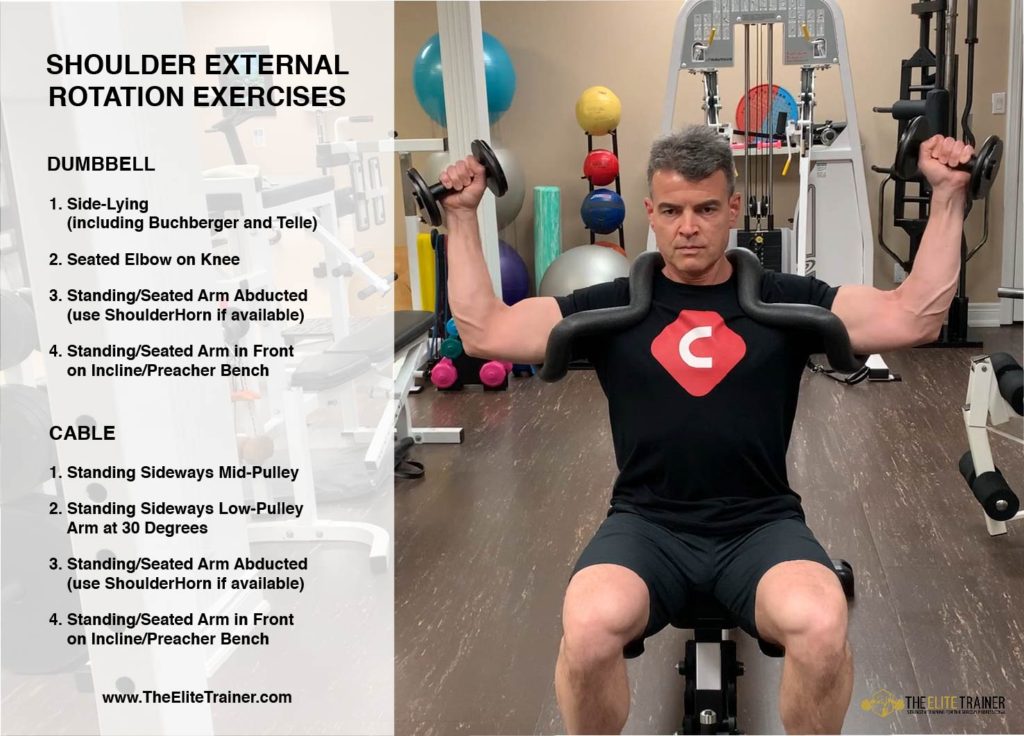
Practice good form when doing these exercises, or any exercise for that matter! Set the scapula in a slightly retracted position, keep the wrist straight and firm, maintain a 90-degree angle at the elbow joint, and rotate only around the shoulder joint throughout the movement.
The infraspinatus and teres minor are relatively small muscles that “burn” like crazy at higher rep ranges due to the accumulation of lactic acid. It’s easy to cheat! Here’s what you should NOT do when training them:
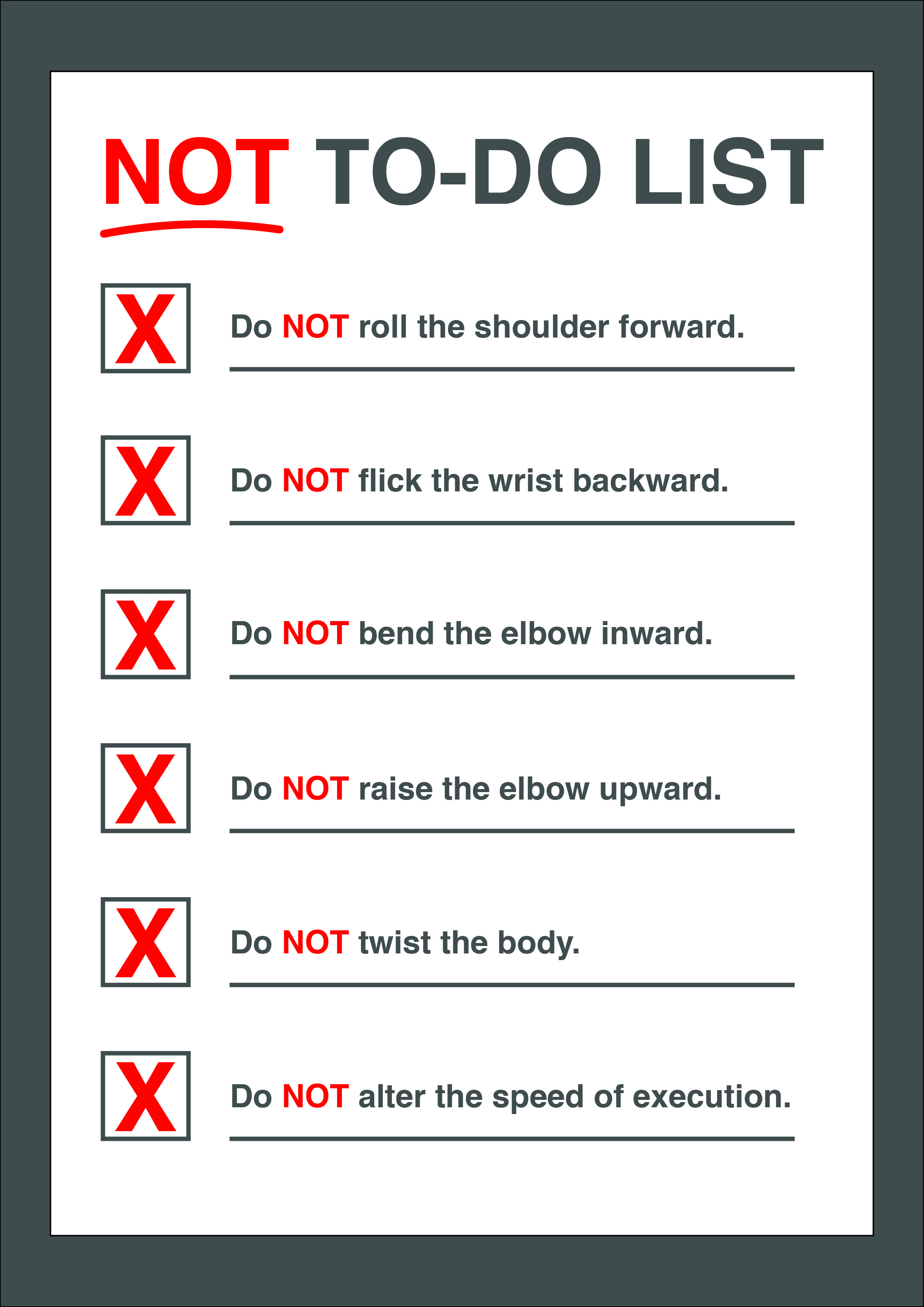
If you notice any of these tendencies right off the bat, stop! The weight is too heavy. Go lighter and do the exercise right. And make sure to terminate a set once you lose form. You want to train the right muscles and you don’t want to learn bad habits. Either do the exercise right or don’t do it all!
Shoulder external rotation should be a regular part of your training. Two other areas of the upper body that are often weak and require some attention are the rear delts and the lower traps. We’ll discuss those in a future article.
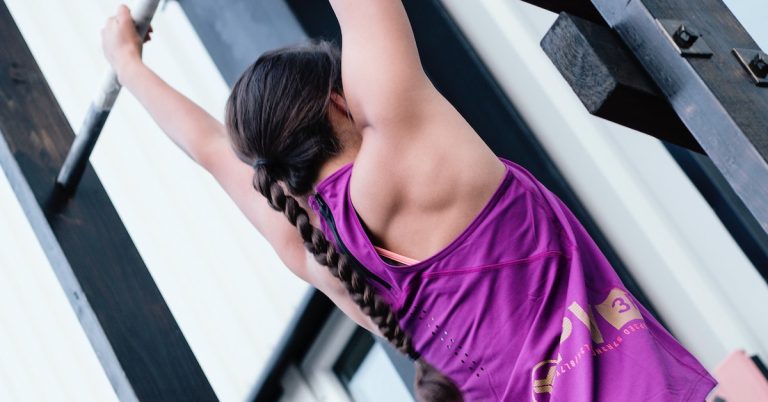
The Periodization Blueprint for Chin-Ups and Pull-Ups
Exciting news! Just got my hands on Swissies45, and they’ve transformed my chin-up game. No more draping an EZ-Curl bar
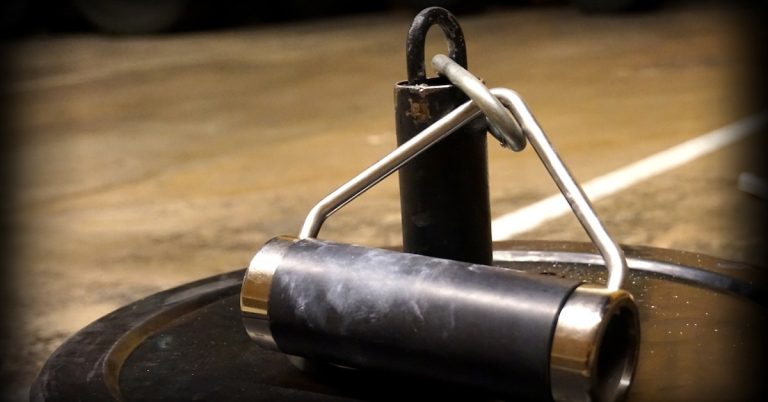
Unleash Your Grip Strength: Elevate Your Performance with IronMind Implements
Are you ready to take your grip strength to the next level? Look no further than IronMind implements. These versatile
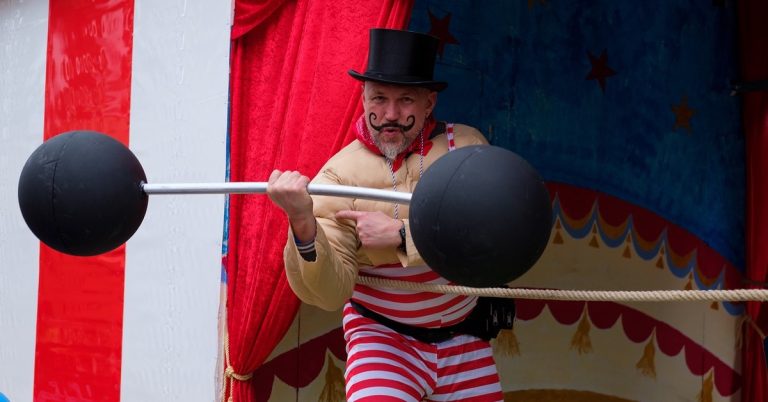
The 3/7 Method for Size and Strength
A new strength training protocol has surfaced that will help you maximize strength gains with less training time and effort.
follow
Error: No feed with the ID 2 found.
Please go to the Instagram Feed settings page to create a feed.
